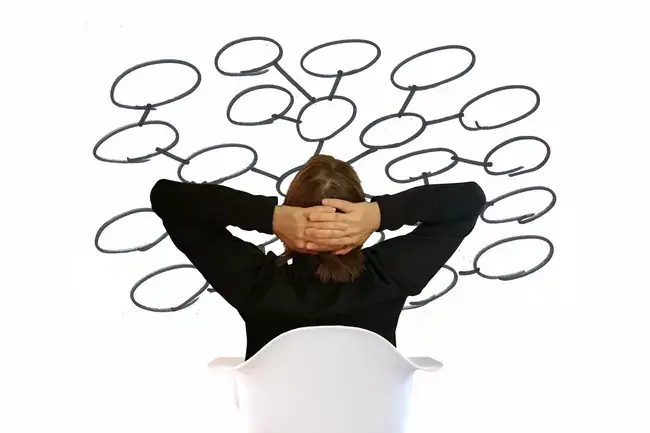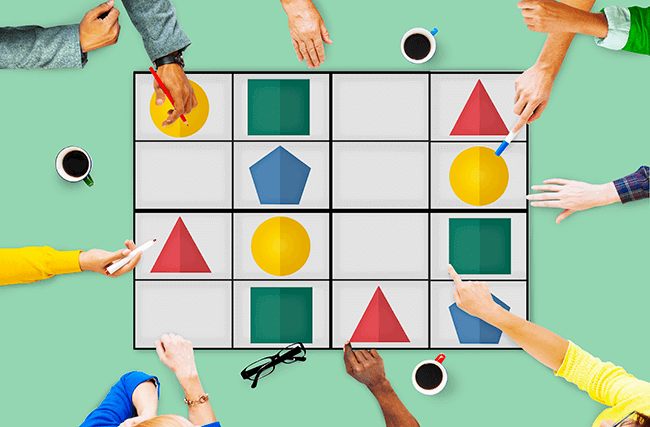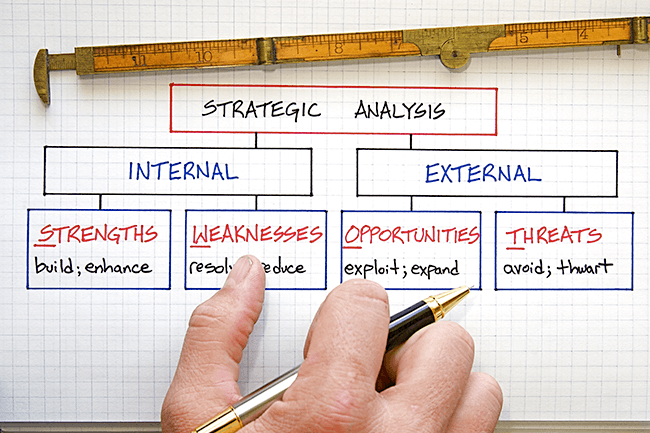Top 7 Mind Map Ideas for Inspiration

A mind map is one of the best ways to get thoughts and concepts down on paper (or, in our case, virtual whiteboards). Mind maps have gotten more and more popular over time as people have begun realizing how helpful they are. Have you tried mind mapping?
Whether you want to organize meetings, make tough decisions, or even just take notes, mind mapping might be the best thing you do at work or school this year.
If you’re new to mind mapping, but you want to give it a try, we’ve got a few great mind map ideas that can help you get started. Read on to learn more.
1. Decision-Making
One of the most helpful mind map ideas for many higher-ups and business owners (or anyone else who ever gets stuck making decisions, really) is to use them for decision-making.
Are you stuck on a few different options for your next important steps? No problem. Using a mind mapping template is a great solution.
Put your various options as the first branches out from your center. For each option, branch out into pros and cons. This will help you visualize what the right answer actually is and it makes it easier to compare when you’re looking at the mind map as a whole.
2. Brainstorming
Make your next brainstorming session more efficient by using a mind map!
Brainstorming is perhaps the best usage of mind maps for people of all ages. While working professionals can use mind maps for brainstorming new project ideas, even students can use mind mapping to write essays and do projects.
Let’s say that you’re trying to come up with a new marketing strategy, but you’re not sure where to start. You have some vague ideas, but nothing is concrete.
Write each of your vague ideas in a branch of the mind map. Each idea will branch out into potential ways that you could bring that idea to life.
For example, if you want to start a video campaign, you could write your different video ideas.
You’d then compare all of your ideas (and their branches) to determine which one seems the most viable and fleshed-out.
Once you choose an idea, you can even create another mind map to come up with further ideas that branch off from it. You’ll end up with a well-rounded idea that you’re ready to put into action.
3. Event Planning
Are you planning any personal events or events for your business? A mind map is here to save the day. Mind maps make fantastic planning tools.
Put the event itself at the center of your map. Each branch of the map will be one thing that you have to do for the event. For example, if you were throwing a company party, your branches might be along the lines of:
- Entertainment
- Food
- Venue
- Dates
From each branch, you’re going to note down options. For example, under the “food” branch, you may have:
- Local catering company
- Food trucks
- Potluck
- Restaurant
This will help you get all of your thoughts out and give you a better idea of your options so you can narrow them down and pick the right one for you. This is also a great way to start coming up with tasks to delegate.
4. General Note-Taking
Not all uses of the mind map have to be in-depth. Really, mind maps are good note-taking tools that you can use during meetings, presentations, or even on your own.
Mind maps allow you to move quickly between concepts without having to double back and make room elsewhere. They allow you to go back and add extra information when you need to or add notes when you have an idea that you’d like to circle back to.
It may take some adjusting to get used to mind maps as note-taking tools, but once you make the switch, you’ll realize how much sense it makes.
5. Giving Presentations
Mind maps can also be used when you’re giving a presentation to a group. You can include them in your standard PowerPoint presentations or use them to replace standard presentations altogether.
When you use a mind map for your presentation, you get to bring your viewers through your thought process with you. You can even modify your presentation as you go along if you have a new idea to work in or if someone else has presented something interesting to the group.
Mind maps are more visually interesting than paragraphs or bulleted lists. They draw the eye.
6. Project Management
Do you have a project to start? Mind maps can help!
Sometimes when we get a list of tasks presented to us, it can seem overwhelming. It’s hard to prioritize things or break them down into smaller parts. Some people freeze up when a list of tasks is unclear or not broken down enough.
A mind map can help.
Take your primary project and break it down into large tasks based on who is going to be completing them. Each large task can be broken down into smaller and more manageable tasks.
You can continue to break those tasks down as far as you like, even if it goes all the way down into step-by-step instructions. This will make the tasks easier to digest and easier to delegate.
7. Holding Meetings
Mind maps are great both for the pre-meeting process and for the meetings themselves.
Before a meeting, use a mind map to get your thoughts on paper so you know what you plan on saying. During the meeting, make a mind map with your team.
Mind maps work well as agendas. Each branch off of the initial “meeting” section will be something else that you have to talk about. If new ideas are brought up during the meeting, you can add them right to the map.
With a digital mind map, it’s easy to share the map on people’s screens during virtual meetings and you can send the map to everyone once the meeting is over.
Try These Mind Map Ideas
These mind map examples are all great and innovative ways to use mind maps! Whether you’re planning ahead, holding a meeting, planning an event, or even just brainstorming, these mind map ideas will help you get organized.
At HuddleIQ, we believe that it’s time to bring remote work into the future. Our collaborative online whiteboard makes project planning, meetings, and more a complete breeze.
Sign up now to try HuddleIQ today.














